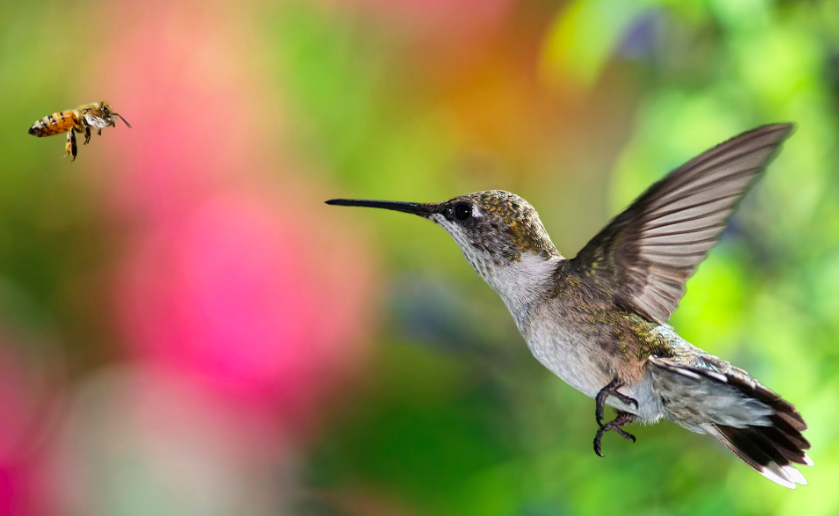Beneath the ethereal dainty figure of a hummingbird is a powerhouse of energy. Hummingbirds have an average of 80 wingbeats per second, 1000 heartbeats per minute, and consume 40 milliliters of oxygen per gram per hour. For comparison, the world’s top athletes reach peak oxygen consumption of a measly 4 milliliters per gram per hour.

Figure 1: A hovering hummingbird burns energy faster than any mammal
Kenneth C. Welch Jr. at the University of Toronto, has made hummingbirds his life’s work, and his most recent publication found out that during strenuous hovering flight, bigger hummingbirds are more efficient energy users than small ones.
“A hummingbird can easily hit 40 milliliters of oxygen per gram per hour. And if I ask the hummingbird to do extra, if I give it a little bit of extra weight to wear, that can go up to well above 60. So, their tissues are using oxygen at rates that are many, many times what we can possibly achieve,” Welch said to the New York Times.
This data is published in the Proceedings of the Royal Society B: Biological Sciences, showing a positive relationship between flight efficiency and body mass.

Figure 2 The relationship between body mass and hovering metabolic rates using Phylogenetic generalized least-squares regression analysis.
Table 1 Regression coefficient for the relationship between body mass (g) and hovering metabolic rate. All variables were logarithmically transformed before analysis. 95% confidence intervals are provided with the slopes within the brackets.
But why do hummingbirds need this much oxygen in the first place? Well, they need it to metabolize the delicious sugary nectar in their diet, and here’s how it works.
Hummingbirds are better than most animals (including us, mere humans) in switching between fat and sugars to power their muscles. Since they feed on nectar that is equal parts fructose and glucose, they have evolved a way to send the fructose directly to their muscles. Humans, on the other hand, mainly fuel our bodies with glucose, and fructose goes straight to fat.
Hummingbirds have streamlined this process by immediately burning sugars that they have just swallowed.
Welch converted this into human-scale, “Ok, if I scale one of my hummingbirds up to adult male human size, my size, how much sugar would I need to drink per minute if I were theoretically a hovering hummingbird? It turned out to be right around the amount of sugar that’s in a can of Coca-cola per minute.” (New York Times)
This makes hummingbirds extremely efficient in converting sugars to spent energy, the best compared to any other bird or mammal. However, at night, its metabolism slowed to a crawl. It’s in a state called “torpor”. Heartbeat and temperature dropped so low that the bird is using 2% of the energy it would used for flying around during the day. This mechanism evolved as a way to survive, otherwise they would starve to death in the hours they spent resting.
With this extremely efficient streamlined process, Hummingbirds are indeed the World’s best athlete.

